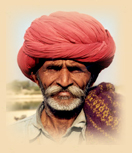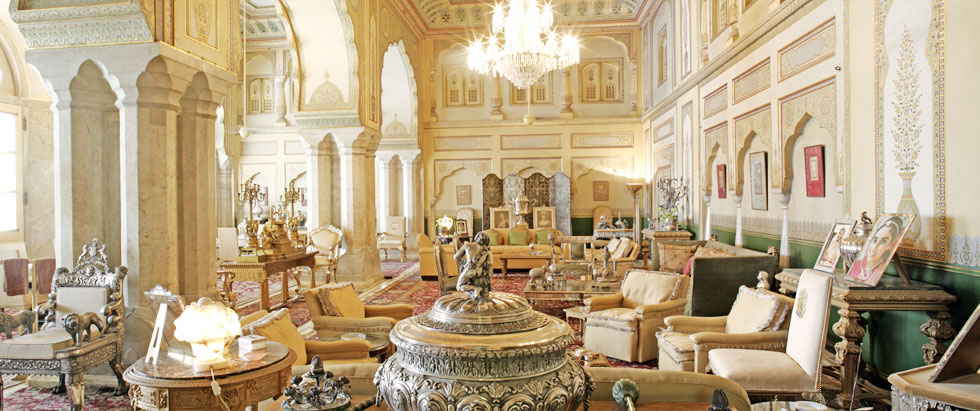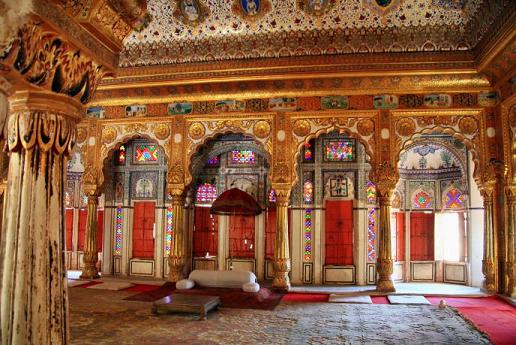|
 |
|
Welcome |
|
Rajasthan
Tours |
|
|
|
|
|
|
|
|
|
|
|
|
|
|
|
|
|
|
|
|
|
|
|
|
|
|
|
|
|
 |
|
|
|
 |
|
Maharaja
Sawai Man Singh Museum |
|
Introduction
of
Maharaja Sawai Man Singh Museum |
|
This
museum main focus is on artifacts that were connected to Indian
culture. This museum has wide collection of sculptures, paintings or
carpets. The Maharaja Sawai Man Singh II Museum is situated inside the
City Palace complex at Jaipur. The museum has an excellent
collection of the ancestral objects of Kachwaha clans of Amber.
City
Palace is a very sprawling complex with its wonderful buildings and
amazing collection of art and artifacts in Jaipur. A major part of the
'City Palace' is now converted into 'Maharaja Sawai Man Singh II
Museum'. It is also the dwelling of the Royal Family of Jaipur.
Located
within the City Palace complex and nestled amidst older buildings,
temples and the palace quarters, this museum was launched in 1959 by
Maharaja Sawai Man Singh II. The artifacts comprise of the ancestral
collections built up by the successive rulers of Amer and Jaipur, and
are presently run by a public charitable trust.
|
|
Exhibits and Galleries of the Museum |
|
A small
collection of manuscripts, paintings, armours and weapons were
displayed in the 'Pothikhana' (library) and the 'Silehkhana' or
armoury of the palace. 'Pothikhana' and 'Silehkhana' were launched in
1952. The museum has a very unique collection. At that time, the
museum was opened only to some special people only with the special
permission of the Maharaja.
In the
year 1959 a new gallery was added to the museum which is known as
handicrafts and textiles gallery and the museum was opened to the
public. Art gallery is situated in the Diwan-i-Aam, all the important
state functions are organised in Diwan-i-Aam. In this gallery a large
variety of exhibits are displayed which includes: Mughal ornamented
bookcovers carpets, manuscripts, miniature paintings, palanquins,
Howdahs, printed books, palm-leaf, gold and silver Takhis-Rawan,
carriages ornamented with coverings of velvet etc.
The museum
has a splendid collection of miniature paintings including two unique
and priceless manuscripts of the Persian translation of the two Hindu
epics, the Ramayana and the Mahabharata. In addition to the finest
miniatures of Amer-Jaipur school, evident in the illustrations of the
Ragamala, BhagavataPurana, Devi Mahatma etc., good examples of early
and later Mughal schools, Deccanese schools and fair specimens from
Bikaner, Malwa, Bundi, Kota, Jodhpur, Kishangarh etc., are also
represented.
The museum
also exhibits an unusual manuscript on 146 forms of Saligram, Surdas'
Padavali and the earliest copy of Bihari's Satsai. This manuscript
collection consists of about 16,000 volumes. In addition to this the
museum also has an old copy of the Ain-i-Akbari and its Hindi
translation done in 1797 AD and a large collection of astronomical
books in Persian, Sanskrit, Arabic, and Latin acquired by Sawai Jai
Singh for study of the planets and their movements.
|
|
Main Attractions of the Museum |
|
'Silehkhana' or the Armoury section of the museum is situated in a
wonderfully decorated suite of rooms. It contains one of the largest
and prominent collections of weapons and traditional handguns in the
country. The weapons section of the museum include 'talwars', Curved
Mughal Shamshers, dagger-broad 'Jamdhars', curved 'Jamkhas', knives,
narrow 'katars', double-edged 'Khandas', Persian Unnas, swords, ' Asas
' and ' Guptis ''Chhuris', axes, lances, , arrows of various patterns
and 'hanbwas'.
The large
carpets displayed against the eastern and western walls of the art
gallery were launched in the Mughal carpet factories at Agra and
Lahore during the reign of Emperor Shahjahan. These carpet collection
are collected by Mirza Raja Jai Singh to adorn some of his newly-built
palaces at Amber. Besides these other objects on display in this
section contains book covers, paper cuttings, postage stamps and coins
of the old Jaipur State, old photographs and negatives, old furniture,
glassware and other decorative objects of art.
Some of
the swords are of great historical importance; there are two swords
and a few with the names of Persian Emperors and Mughal Generals
engraved on them, and many personal weapons of Maharaja Ram Singh,
Madho Singh II etc. The most important exhibit is perhaps the
unusually large brocaded Jama (a robe) and pyjama of Maharaja Madho
Singh I. The Maharaja was no doubt of gigantic physical proportions.
|
|
Textile and Costume Section |
|
The
Textile and Costume section of the Museum exhibits a large collection
of old embroidered rugs, tent-hangings, decorated rosary-bags, Rath (a
type of carriage) covers, caps, Thal-Poshes (dish covers) royal
paraphernalia, Muslins from Dhaka, Bandhej (tie and dye) pieces from
Jaipur, Kashmir shawls, fine loom, Kimkhabs (brocades) from
Aurangabad, Banaras and Surat, hand block prints from Sanganer and
other localities, Unique Rajasthani costumes used over the ages,
Richly decorated costumes worn by the different Maharajas and their
relatives, Zari (gold thread) and Gota (gold or silver frill) works,
for which Jaipur has always been very well-known.
|
 |
 |
|
Outside View of Museum |
Inside View of beautiful Museum |
 |
 |
|
Beautiful Paintings and
Views of Museum |
Tourists Visiting
Museum |
|
|
|
|
|
|